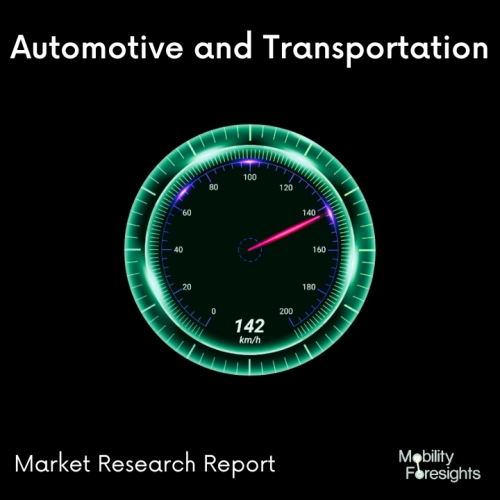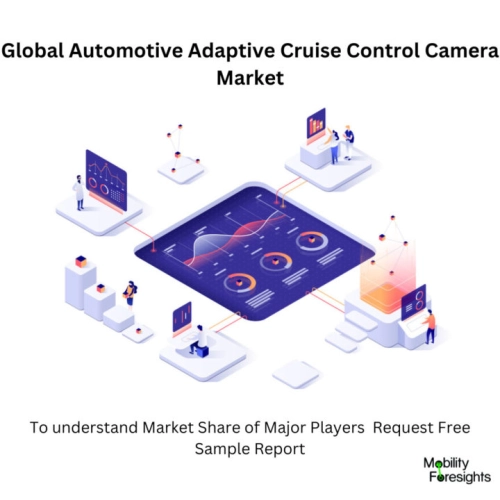
- Get in Touch with Us

Last Updated: Apr 25, 2025 | Study Period: 2024-2030
Adaptive Cruise Control keeps track of the vehicles they're following using a forward-facing camera or, depending on the vehicle, a forward-facing camera and radar technology. Dual cameras are frequently used in camera-based adaptive cruise control.
The distance between vehicles in front is calculated using software, and the vehicle speed is then adjusted accordingly. Behind the windscreen and in front of the rearview mirror is where the Adaptive Cruise Control camera is positioned. To ensure that the camera operates effectively, the windscreen must be kept clean.

The Global Automotive Adaptive cruise control camera market accounted for $XX Billion in 2023 and is anticipated to reach $XX Billion by 2030, registering a CAGR of XX% from 2024 to 2030.
The main tools used by adaptive cruise control systems to control the distance to the vehicle in front are cameras and sensors. The methods used to measure distance can take a variety of forms. The front bumper of some cars houses a visible radar, while the front bumper of other cars houses a radar that is concealed.
The use of multiple radars behind the front bumper is even practised by OEMs like Volkswagen and Cadillac. To help determine the distance between vehicles, some systems make use of a forward-facing camera close to the rearview mirror.
The adaptive cruise control system is managed by at least one OEM using two cameras located close to the rearview mirror.The radar sensor often has a module incorporated into it.
The calculations for sending and receiving signals are entirely performed by this module. A module could potentially be integrated into forward-facing cameras. If another vehicle is nearby and how far it is, these sensors and cameras can detect it.
In order to slow down the vehicle if the vehicle in front of it is slowing down, the data from these modules is then passed to other modules in the car, such as the powertrain control module.
Usually, a lot of modules will make use of information from the sensor and/or camera. Wheel speed, steering angle, and engine torque are just a few of the sensors that can provide data to the ACC system that will help it control the speed of the car.
| Sl no | Topic |
| 1 | Market Segmentation |
| 2 | Scope of the report |
| 3 | Abbreviations |
| 4 | Research Methodology |
| 5 | Executive Summary |
| 6 | Introduction |
| 7 | Insights from Industry stakeholders |
| 8 | Cost breakdown of Product by sub-components and average profit margin |
| 9 | Disruptive innovation in the Industry |
| 10 | Technology trends in the Industry |
| 11 | Consumer trends in the industry |
| 12 | Recent Production Milestones |
| 13 | Component Manufacturing in US, EU and China |
| 14 | COVID-19 impact on overall market |
| 15 | COVID-19 impact on Production of components |
| 16 | COVID-19 impact on Point of sale |
| 17 | Market Segmentation, Dynamics and Forecast by Geography, 2024-2030 |
| 18 | Market Segmentation, Dynamics and Forecast by Product Type, 2024-2030 |
| 19 | Market Segmentation, Dynamics and Forecast by Application, 2024-2030 |
| 20 | Market Segmentation, Dynamics and Forecast by End use, 2024-2030 |
| 21 | Product installation rate by OEM, 2023 |
| 22 | Incline/Decline in Average B-2-B selling price in past 5 years |
| 23 | Competition from substitute products |
| 24 | Gross margin and average profitability of suppliers |
| 25 | New product development in past 12 months |
| 26 | M&A in past 12 months |
| 27 | Growth strategy of leading players |
| 28 | Market share of vendors, 2023 |
| 29 | Company Profiles |
| 30 | Unmet needs and opportunity for new suppliers |
| 31 | Conclusion |
| 32 | Appendix |